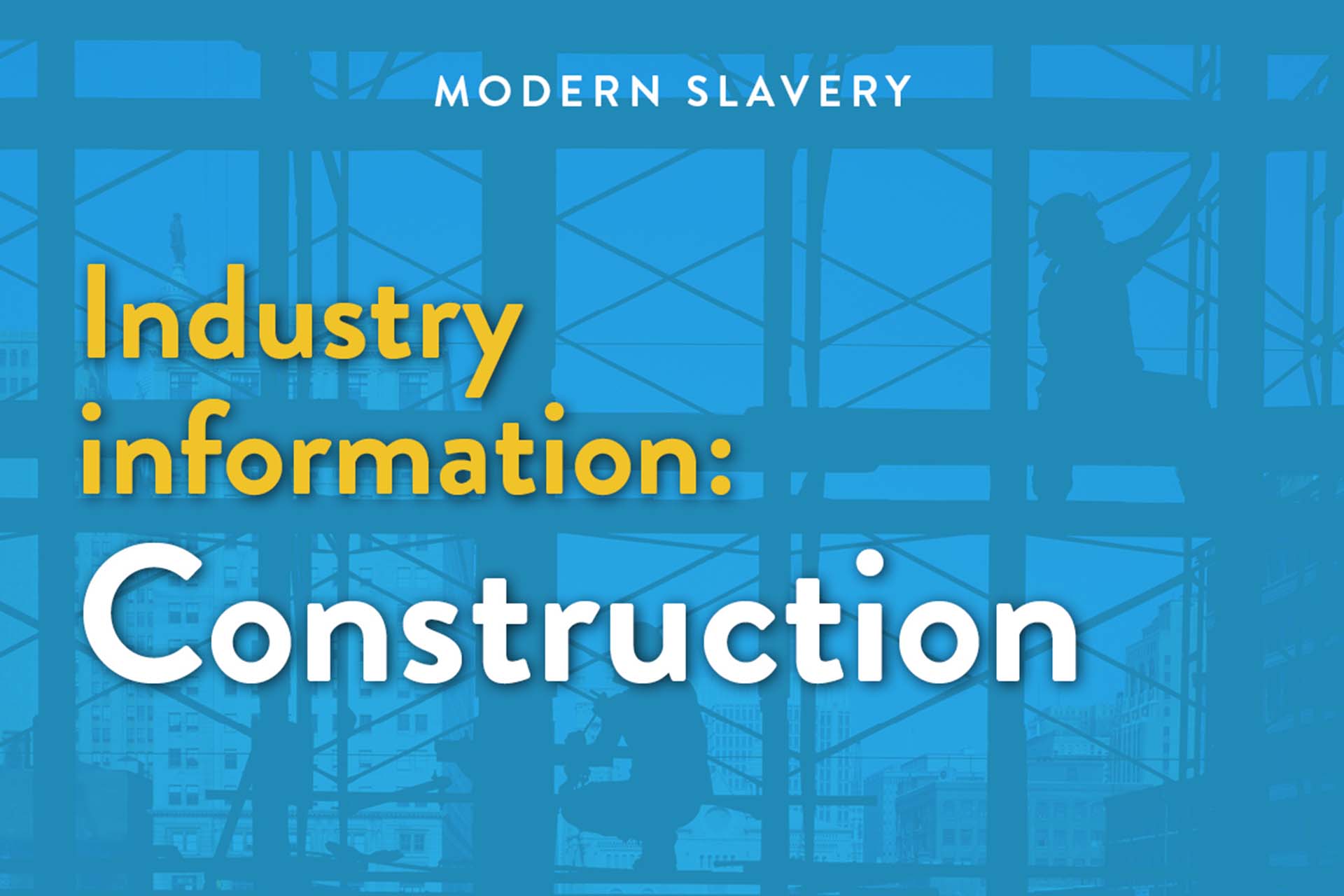
As part of our series to understand more about the situation in Leicester’s garment factories and to educate others, we are sharing some key information and resources about high-risk industries in the UK. Today’s blog looks at the construction sector.
The construction sector contributes about £117 billion to the UK economy. There are 343,000 registered construction businesses in the UK. In a nutshell, it’s a huge industry and one that has been identified as at risk of exploitation.
Understanding the risks
Workforce
The workforce is made up of a large number of migrant workers (over 200,000). Similar to hospitality, the perception with migrant workers, particularly in lower-paid jobs, is that they will accept inferior wages and working conditions. Often workers have difficulties understanding and accessing their rights. It is not uncommon that companies do not know where their workforce comes from because of the multiple layers from subcontracting.
Structure of the industry
There is a high demand for a flexible workforce to be able to quickly adjust to changes in workload. Because of this and the layers of subcontracting, there are often informal hiring and firing practices, sketchy employment arrangements and recruitment scams that result in bonded labour.
Recruitment practices
Workers may pay large fees as part of the recruitment process, may have their passports and possessions withheld, and may be deceived, winding up doing a job they hadn’t agreed to.
Supply chains
A lot of the materials used for construction (i.e. stone, bricks cement) are often purchased through complex and global supply chains. These materials can be linked with exploitation in countries around the world.
To learn more about the risks:
- Stronger Together, CIOB created this video about exploitation in the sector, based on true stories.
- FLEX produced this report about exploitation within the London construction industry.
- The GLAA has put together an industry profile which touches on the risk areas and suggests questions to ask to prevent exploitation.
- CIOB published a report about the risks, particularly in supply chains.
What can you do?
If construction takes place at any point in your supply chain, it’s worth investigating what processes the companies you work with follow to address risk of exploitation:
1. Are they signed up to the Construction Protocol?
The GLAA coordinates a collaboration of over 150 members in the construction industry. Members commit to a certain standard which involves working in partnership, sharing information to prevent exploitation, raising awareness of modern slavery in their supply chain and more. Find out more here.
2. How do they ensure workers throughout the supply chain know their rights?
If knowledge of rights, and the lack therefore, is a risk factor for your industry, as it is with construction, businesses should be working to raise this level of knowledge. Is information easily accessible to workers? Is there relevant training? Do workers know about unions they can join or where they can get support for workplace grievances?
3. Are they aware of all layers in their supply chain?
The layered nature of the industry means oversight of all workers can be muddied. As a first step, lead businesses should work to identify who they’re subcontracting to and who those organisations subcontract to (and so on). This type of oversight will make it easier to start ensuring practices are at a certain standard throughout the chain.
Guidance for businesses
You can point construction businesses in the right direction to address the risks of exploitation in their industry:
- Stronger Together offers tools and training specific to the sector (this comes at a cost).
- The GLAA has leaflets with the signs of exploitation and how to respond.
- SAFERjobs, a joint industry, government and law enforcement charity, works with recruitment companies to identify recruitment scams and also offers a free phone advisory service to jobseekers and businesses.
Our next post will look at agriculture and the risks of exploitation in the sector. You can view it here. You can also read our blog about the hospitality sector here.
*This is part of a blog series examining exploitation in the UK. To read our a summary of our thoughts on what happened in Leicester go here. To learn more about why exploitation happens, go here.


